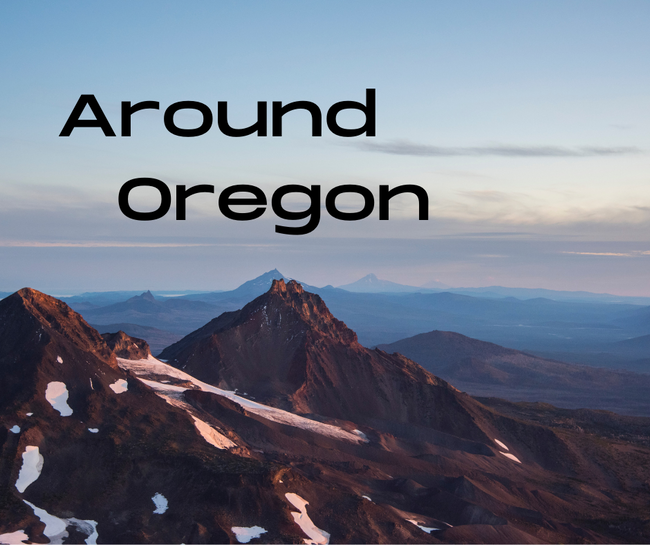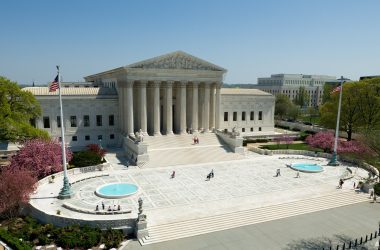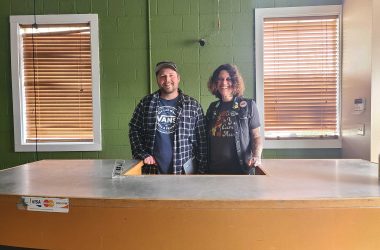
Confederated Tribes of Grand Ronde on March 24 shared new renderings of its vision for the future of its culturally significant land next to Willamette Falls, the 23-acre former paper mill property. The Grand Ronde bought the property in August 2019.
Newly released documents show tribal leaders are proposing a more extensive ecological restoration at the former mill’s southern end. These plans would include restoring natural basalt landscape and water channels underneath about half of the site’s industrial buildings now proposed for demolition.
Tribal Chairwoman Cheryle A. Kennedy said this vision will help restore public access, provide economic prosperity and return the tribe to the role of caregiver over an important piece of its homeland.
“Acquiring the property at Willamette Falls let us reclaim part of our history and allowed us to once again become stewards of the land and the falls,” Kennedy said. “Now, we head into the future with a vision for this land that helps heal it and revitalize it while telling our story and sharing our history.”
Native plantings would be reestablished in the area now proposed for demolition and restored riparian habitat. Tribal leaders hope this environmental reclamation will provide vast benefits for native fish, birds and other wildlife.
“This is a meaningful and exciting time for our tribe and for everyone who will benefit from the healing and promise of our Willamette Falls site,” Kennedy said. “We look forward to working with all of the partners who share in our vision for the land, from its historical, ecological and cultural significance to its potential to create prosperity for the entire region.”
Riverwalk, development are separate projects
Grand Ronde has previously proposed to demolish buildings on the site, although the latest sketches involve a larger potential area for demolition and environmental restoration. In February, Grand Ronde officials said Mill O has deteriorated in the past decade and would be a likely candidate for demolition after the completion of a second phase of walkway construction. Oregon City previously had identified Mill O as a prime candidate for creative reuse like many of the former warehouses in Portland’s Pearl District.
Regional leaders’ approval of the walkway concept on Feb. 4 turned out to be only a tentative, verbal agreement. The Grand Ronde tribe has since delayed signing on the dotted line to complete the public Riverwalk. The tribe, along with city and county leaders, in February agreed on a plan for a 800-foot walkway alignment that they said would provide the public with “wonderful” views of Willamette Falls and end a series of delays in the project.
Oregon City Commissioner Frank O’Donnell, a commission liaison to the Willamette Falls Legacy Project, said that in talking about the site, he always has to distinguish the publicly funded Riverwalk project with potential redevelopment of other areas of the former paper mill by new property owners.
“The Grand Ronde land is theirs to do with as they wish within the confines of the law,” O’Donnell said.
Oregon City Manager Tony Konkol said at the March 9 meeting of commissioners that there was some concern from some other tribes in the Pacific Northwest about the involvement they’ve had in planning the Riverwalk. Metro has agreed to hear their concerns in formal listening sessions, Konkol said, which in turn caused renewed concern by the Grand Ronde about what Metro plans to do with the information it receives from neighboring tribes.
“That’s led to slowing down the process a little bit to make sure that we’re being respectful to all of the voices at the table,” Konkol said. “I agree with Commissioner O’Donnell that there are very separate projects here.”
Konkol noted, when the Grand Ronde is ready to develop buildings at the site, the tribe will have to submit land-use proposals to the city’s planning department and get permission from various other agencies. Zoning of the district gives the tribe flexibility to build hotels, apartments, museums, markets, offices and light industrial buildings.
Since acquiring the property, tribal leaders say they’ve been working with Oregon DEQ on onsite remediation efforts and will soon embark on a master-planning process for the site. Whatever the details of mixed use on the site might look like, the Grand Ronde tribe wants new and revitalized historic buildings at Willamette Falls to reconnect Oregonians with the area, and reflect the tribe’s story and its longstanding cultural connection to the area.
No date set for groundbreaking
Tribal leaders envision mixed-use development at the northern end of the site that aims to connect visually and physically to the restored landscape. They say potential development could include office, hospitality, institutional or educational spaces, as well as tribal spaces, public gathering spots, restaurants and retail.
One page in the visioning document shows a generic hotel room with the word “hospitality.” The text reads:
“Today, the site is a sprawling former industrial complex. Tomorrow, it could offer a signature restored riverbank incorporating several former falls channels, native species of vegetation and new spaces for gatherings, ceremonies and events. After Restoration, a new place focused on the walamt Willamette River and tumwata Willamette Falls will create new demand in the market for space at the site attracting uses such as offices, hotels or institutional/education to lease space in buildings at the falls.”
Since purchasing the site, the Grand Ronde tribe has been working with a design team from GBD Architects and Walker Macy to create a vision for the site. Focused on the central idea of healing, the vision will also be guided by the values of spirit, place, people and prosperity.
Stacia Hernandez, Grand Ronde chief of staff and the project lead, told Pamplin Media Group that they can’t say when ground will be broken on any of the work. “In the next month we will get the master plan going,” she said.
Even the tribes refer to it as the Blue Heron site, referring to the name of the former paper mill, but the falls are sometimes known by the native term, tumwater.
The visioning document released Wednesday has three different site concepts. Hernandez says the master plan should be written by the end of 2021. It is where the tribe, acting as developer, and the architects, look at the market analysis they have already done and try to plan out where shops, offices and hotels would best be built. Complicating things is the number of abandoned industrial buildings, some of which must be demolished and some which can be reused. And on top of that is the tourist-friendly riverwalk which could be built sooner but mist coexist with construction for several years.
So far the four core values of the development — public access, economic development, historical interpretation and habitat restoration — are more associated with the riverwalk project because it is further ahead.
Metro is leading the design team for the riverwalk, but fundraising for it is being led by the Willamette Falls Trust. Hernandez said the tribe is the main voice in deciding how to develop the site, and the Trust is focused on the Riverwalk.
Currently the only work going on at the site is remediation, with tribal crews working with the DEQ to clean up industrial pollution and clear weeds. Recently they removed a large underground fuel tank and replaced the contaminated soil around it.
This story published with permission as part of the AP Storyshare system. Salem Reporter is a contributor to this network of Oregon news outlets.









